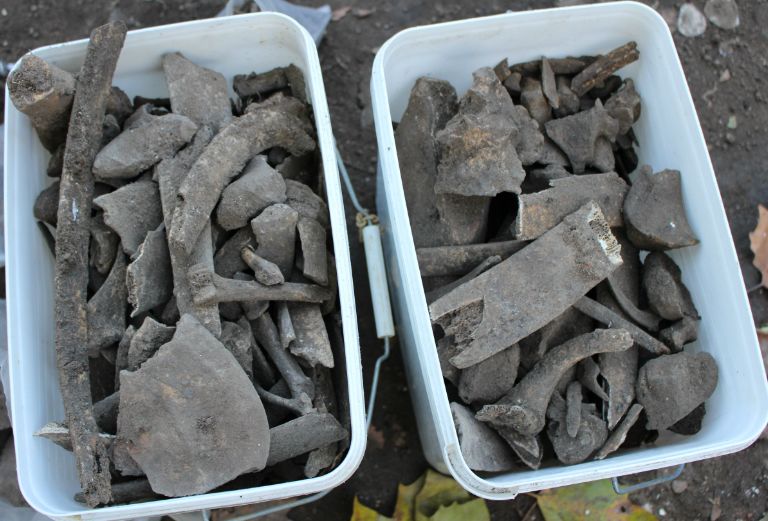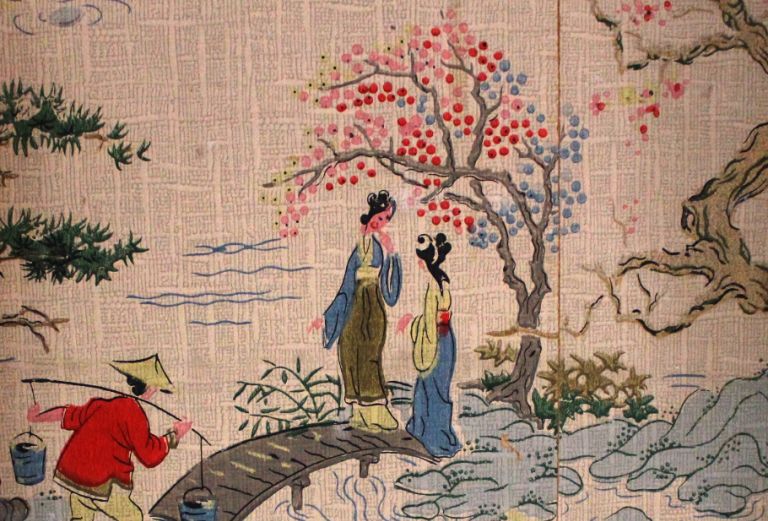
by Alexis Haslam, community archaeologist
In regards of archaeology, the finds from 2017’s Community Dig have proved very exciting. The animal bone from the backfill of our large ditch which dates to between 1480 and 1550 gives us a real insight into what was being consumed at the Palace at the time. Along with the usual domesticates of cattle, pig and sheep we also have pheasant, duck, goose and venison.
Significant quantities of rabbit and chicken were also being devoured, with many of the rabbits very small suggesting that they were being kept in cages rather than just sourced from the warren. Song thrushes, squabs (baby doves) and suckling pig also contributed to the diet and raptor bones suggest that either falconry was an activity here or that scavengers such as buzzard and kite were being actively controlled.
The fish was also quite exciting and along with cod / haddock, plaice, flonder and salmon, thornback ray, ling and conger eel were also being eaten. Of particular significance was the presence of two turkey bones. Now this may not sound especially exciting, but when you consider that the earliest reference to turkey in Europe dates to 1520, then our turkey bones could well be the first evidence for a turkey dinner in London (other early turkey bones have been found in Exeter and St Albans)! The doves also suggest that there was a dovecote somewhere on the site – funny that!
The plaster recovered from our dump layer is proving somewhat complex. Deposited between 1750 and 1760 this relates to material that was removed during Bishop Sherlock’s renovations. There are at least three different schemes present with the majority belonging to ‘Scheme 1’. We certainly have evidence of cornice and ceiling decoration along with fragments of a possible overmantle. Stylistically it follows Inigo Jones’ influence so is post 1615. Unlikely to date to the Commonwealth period (1649-1660), dating it precisely is tricky.
We know that Compton spent all of his money on plants and that Robinson complained bitterly about the state of the Palace when he took over. This would suggest that the plaster was either commissioned by Juxon (1633-1660), or Robinson (1713-1723). Interestingly we have Juxon’s coat of arms (1636) in the museum, and the boss on his mitre appears to bear some similarities with the plaster cartouche discovered during the excavation. The floral elements of the plaster also bear a similarity to the garland on the Great Dining Room ceiling at Ham House (dated 1638). The coat of arms is recorded as ‘discovered in the grounds’ in the 19th century. If only we knew precisely whereabouts…
Present day, building work continues in the Tudor Court as the mechanical and electrical fit out is well underway. The redecoration is also moving forwards and the installation of showers, sinks and toilets has also started. Sykes and Son recently gained access to the northern ground floor and initial investigative works have begun. Perhaps the most exciting discovery has been a section of 19th century dado rail accompanied by Chinoiserie wallpaper dating to the 1920’s which were hidden behind modern plasterboard.
